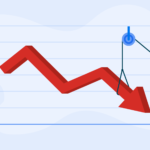Financial independence and early retirement are concepts that are gaining momentum among individuals aiming for a secure and fulfilling future. This guide dives into the essentials of achieving financial autonomy and the strategic planning required to retire ahead of the traditional age.
From understanding the foundation of the FIRE movement to actionable strategies and planning for early departure from the workforce, this comprehensive piece covers it all, providing valuable insights for those determined to pave their path towards financial freedom.
Unlocking the Basics of Financial Autonomy
Financial independence lays the foundation for a life where working is a choice rather than a necessity. It’s about accumulating enough assets that generate income, surpassing your living expenses, thereby granting the freedom to pursue passions without financial constraints.
Key to this liberation is the concept of the FIRE movement, an acronym for Financial Independence, Retire Early. For a deeper understanding, explore “The FIRE movement explained” which offers an insightful overview of this growing trend, illustrating how individuals are redefining the roadmap to financial liberty.
To achieve this coveted state, one needs to cultivate a profound relationship with money, understanding not just how to earn it, but how to save, invest, and grow it.
Economic independence demands a shift from fleeting pleasures to long-term satisfaction, necessitating sacrifices today for a more secure tomorrow.
Formulating a Blueprint for Economic Liberation
Embarking on this journey requires deliberate planning and a clear strategy. The cornerstone of building wealth is the adept management of income and expenses, along with a robust investment plan.
For a detailed guide, consider “Strategies for achieving financial independence“, which elucidates the various paths one can take, from aggressive saving to intelligent investing, in securing an early exit from the workforce.
It underscores the importance of living below one’s means, consistently saving a significant portion of income, and investing in assets that yield steady returns over time.
Investment Vehicles and Passive Income Streams
Building a diverse portfolio is crucial to mitigating risk and ensuring a steady flow of passive income. This includes a mix of stocks, bonds, real estate, and perhaps, side ventures.
Understanding the power of compound interest and its role in wealth accumulation cannot be overstated. Early and wise investments compound over time, significantly boosting one’s financial reserves.
Exploring unconventional income streams, from rental properties to online businesses, broadens one’s financial base, accelerating the journey towards economic independence.
Moreover, continuous learning and financial education are instrumental in navigating the complex landscape of investments and wealth management.
Anticipating and Planning for Early Retirement
Transitioning towards early retirement requires more than a hefty savings account. It necessitates comprehensive planning covering healthcare, long-term care, and lifestyle changes.
To better prepare for this phase, delve into “Planning for early retirement“, a resource rich in strategies aimed at protecting and maximizing your wealth in the long term.
Adjusting to a reduced income stream post-retirement means careful budgeting, expense tracking, and potentially, downsizing your lifestyle to preserve financial reserves.
Moreover, considering inflation, market fluctuations, and unexpected expenses is vital in ensuring a sustainable retired life. Crafting a detailed withdrawal strategy is crucial to avoid depleting your nest egg prematurely.
Navigating Challenges and Risks
The path to financial independence and retiring early is not devoid of obstacles. Market volatility, economic downturns, and personal emergencies can derail even the most meticulous plans.
An emergency fund, equivalent to several months of living expenses, is indispensable, acting as a financial buffer against unforeseen circumstances.
Diversification across asset classes and geographical boundaries can protect against systemic risks, ensuring your investment portfolio is resilient.
Maintaining flexibility in your strategies, adjusting to changing economic landscapes, and staying informed about financial markets is key to overcoming these challenges.
Conclusion
Achieving financial independence and embarking on early retirement is a transformative journey that demands discipline, planning, and resilience. It unlocks a world where you are no longer bound by employment to meet your financial needs, offering the ultimate freedom to live on your own terms.
While the path is fraught with challenges, the rewards of financial autonomy and the ability to retire early are unparalleled. With the right mindset, strategies, and a bit of courage, this ambitious goal is within reach, promising a secure and fulfilling future.


